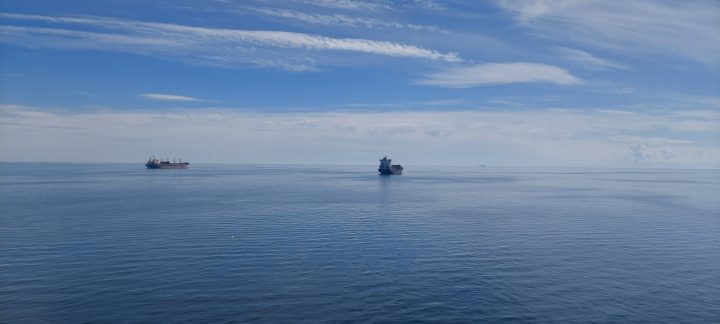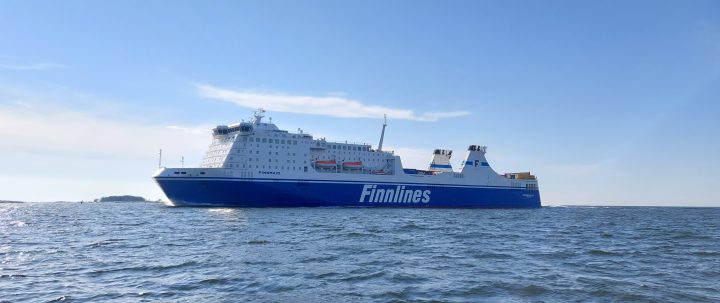What happened to Finnish shipping?
The key to the development of Finnish shipping is that it should be seen as its own internationally competitive industry, and not just as an activity that supports the export industry and security of supply.
During my summer vacation, I found a treasure from ten years ago on my bookshelf “Global Shipping in Small Nations – Nordic Experiences after 1960” (edited by S. Tenold, M. J. Iversen and E. Lange). The book analyzes Nordic shipping clusters from 1960 to 2008. The shipping activities of Denmark and Norway have grown over the years, Denmark even very significantly, while Finland’s share of the world’s shipping tonnage has decreased by about half during this period and Sweden’s share by a third.
During the reviewed fifty years, the global economy has had both major economic booms and busts. In these times, worldwide shipping has been sometimes very successful and sometimes very challenging. The authors of the book still manage to highlight the factors by which Norway and especially Denmark have succeeded, while Finland and especially Sweden have not.
Timing of investments, innovations, and economic policy
The authors point out the old truth that the biggest factor in the success of shipping company operations is ship investments made at the right time, or actually avoiding ill-timed investments. It is a big risk if you have invested in expensive new tonnage during the boom period, just before the downturn. In this case, it has been necessary to pay an expensive price for new ships, and after the ships were completed, there was no longer enough cargo to transport and repay the investments. This is how shipping companies often end up bankrupt.
However, timely investments are not enough for successful shipping company operations. The most successful Nordic shipping companies have been innovative when situations change. For example, shipping companies have introduced new ship types or specialized in specific customer needs, when the older strategy has lost its growth potential. The book even mentions that the “business-as-usual” operating model is a sure recipe for failure for shipping companies.
The third supporting element for successful shipping company operations is a favorable national business policy that supports shipping. In Norway and Denmark, the support systems of the maritime sector have been renewed and supported the development of the sector, e.g. by introducing tonnage tax before the other Nordic countries, but this did not happen in Sweden, which eventually led to a significant reduction of the country’s entire maritime sector.
In summary, it can be said that those shipping clusters that actively adapted to the challenges of the future both at the corporate and administrative levels were successful. And those shipping companies that fought against the changes are the losers.
Finland also gets the precise analysis it deserves in the work. Yrjö Kaukiainen and Jari Ojala write that in 1995 the tonnage of Finnish shipping covered approximately 0.64 percent of the world’s shipping tonnage (GT). About half of this was under the Finnish flag and half under the flags of other countries. Since then, Finland’s tonnage has roughly halved.

Analysis of Finnish shipping
Kaukiainen and Ojala analyze the issue creditably and point out that the most significant reason for Finland’s limited success is that Finnish shipping is mainly seen as a transport that supports the country’s export industry and import activities. In Finland, shipping is not seen as a separate economically productive business, so its economic policy is also minimal.
In addition, Kaukiainen and Ojala write that Finland’s national shipping policy has been mainly interested in ice sea navigation and security of supply. Due to the challenging geographical conditions of our country (difficult to navigate channels that even freeze in winter), we wanted to ensure that a large part of shipping is domestic.
As a result, the Finnish shipping sector has never grown so large as an economic or employment industry that it would have become a significant topic in the national political debate. In addition, the shipbuilding industry – as a larger industry – has dominated Finland’s maritime cluster discussions.
Finland has thus fared poorly in maritime policy compared to our Nordic peers Norway and Denmark. But how to move forward?
Finnish shipping in the near future?
This spring, the Finnish shipping market report published by the Ministry of Transport and Communications was published, in which researchers from the University of Turku, led by professors Tomi Solakivi and Lauri Ojala, assessed the competitiveness of the Finnish ship registry.
The researchers divide Finnish shipping into four categories: shipping companies operating in passenger traffic, shipping companies that offer services directly to industry, protected sub-markets (such as icebreaking), and shipping companies operating in open competition markets, i.e. in international waters, mainly in traffic between third countries.
The researchers state that the Finnish registry is poorly or not at all competitive elsewhere than in the protected sub-market and passenger-car ferry traffic. In bulk cargo transport, the Finnish register may weaken as regulatory and competitive pressure guides the reserve to more cost-effective solutions. In the market of open competition, the Finnish register has not been uncompetitive for a long time.
As challenges for the future, the researchers especially emphasize the availability of skilled personnel: the attractiveness of the field as well as education and research should be increased. It is worrisome if the Finnish shipping industry is seen in the future only as an industry that supports the export industry, in which case the size of the sector will decrease so small that it will no longer be able to renew itself, innovate and attract labor.
The Nordic examples suggest that in order to grow, or even maintain its position, Finnish shipping should seize new opportunities and innovations. Currently, the most significant challenges in world shipping are related to stricter greenhouse gas emissions and digitalization.
The key to the development of Finnish shipping is that it should be seen as its own internationally competitive industry, and not just as an activity that supports the export industry and security of supply. Some of the factors are a skilled and sufficient workforce, a favorable economic policy supporting shipping and innovative and sufficiently large shipping companies.
Author

Ulla Tapaninen works as a Tenured Associate Professor of Maritime Transport at Tallinn University of Technology
This article has been published in Finnish in From land and Sea Blog of Brahea Centre, the University of Turku in August 2022.
